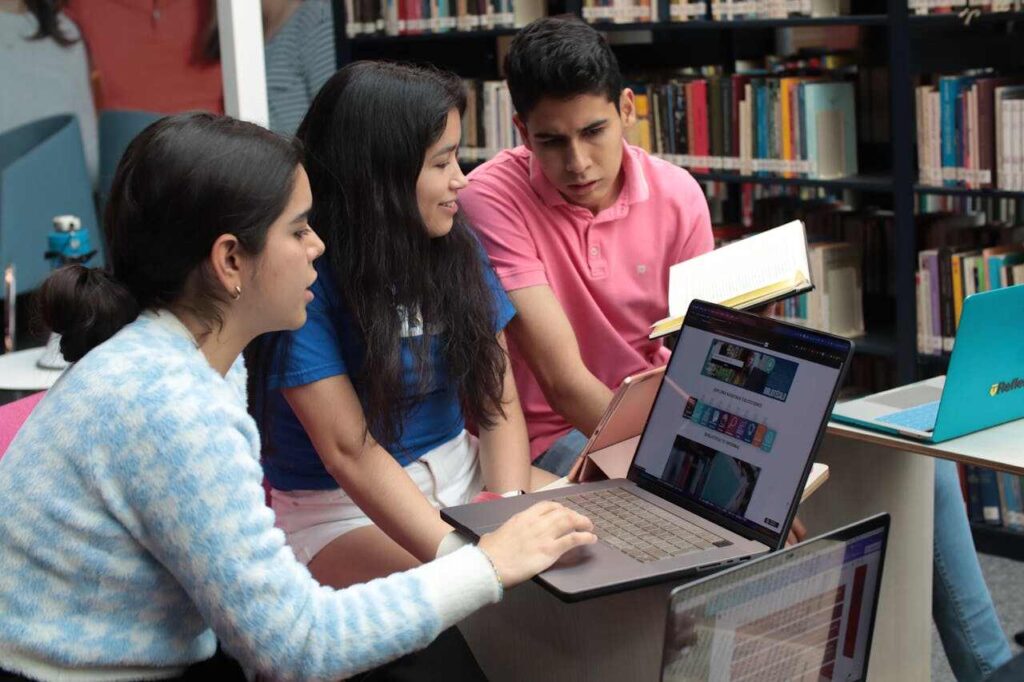As an experienced IB writer, I frequently get asked about the ideal number of sources for an EE. This question is super important because the quality and quantity of your sources can have a big impact on the quality of your Extended Essay (EE).
In my experience, grasping the ideal number of sources for an IB EE is more than just reaching a specific count — it’s about ensuring your research is comprehensive, reliable, and well-backed. Let’s get into this topic so you can have all the support you need to do well in your EE.
Why Are Sources So Important in Your IB Extended Essay?
Let’s discuss the importance of sources. A key factor for a solid EE is supporting your points with trustworthy and applicable resources. Having reliable sources ensures that even the most brilliant ideas don’t lose their impact.
When I assist students with the EE writing process, I always stress the importance of sources. They fulfill the bibliography and add credibility and depth to your essay. In my view, a thoroughly researched Extended Essay showcases a student’s aptitude for critically engaging with various sources. It highlights their ability to assess and combine information.
Consider your sources as the fundamental components of your essay. Just like you wouldn’t use flimsy materials to construct a building, it’s important to avoid relying on unreliable sources when working on your EE. Using reliable sources enables you to:
- Present supporting evidence. They provide solid evidence, facts, and examples supporting your arguments.
- Display various points of view. Interacting with different sources allows you to examine different perspectives, boosting your evaluation.
- Show the extent of your research efforts. Various sources indicate that you have extensively researched your subject and possess a deep level of knowledge.
While working on my IB Extended Essay, I quickly realized that choosing the appropriate sources was just as crucial as writing. By locating, examining, and incorporating these sources into your essay, you can boost your critical thinking abilities and not fail your EE.
The key differentiator between an exceptional EE and a decent one lies in the seamless integration of sources into the narrative. It’s not only about including them in your bibliography — it’s about using them effectively to construct a persuasive and well-backed argument.
How Many Sources Should I Have in My EE?
Are you curious about the number of sources required for your EE? It’s a frequently asked question, and it holds significant importance. From what I’ve seen, a lot of students stress about reaching a specific number, but based on the overall IB criteria, there isn’t a rigid requirement you have to fulfill. Instead, prioritize the quality and relevance of the sources you select. Usually, students use around 10 to 20 sources for their research, although this number can differ based on the topic and extent of the study.
Allow me to provide further clarification:
- When tackling a History EE, it’s essential to consider a wide range of sources, including primary and secondary ones, to ensure you effectively cover different perspectives.
- Alternatively, a Mathematics EE may necessitate fewer sources, focusing on top-notch technical references that directly pertain to your research question.
So, the number of sources you use should be based on the specific requirements of your topic and subject area rather than trying to meet a one-size-fits-all goal.
Through my experience, I’ve come to understand that the IB program doesn’t impose a specific requirement for the number of sources in essays, as they recognize the individuality of each piece. You have the freedom to customize your research to fit your particular subject.
I think it’s more effective to include a select few sources directly related to your topic rather than including irrelevant references just to meet a specific number.
Why Quality Trumps Quantity in Your Extended Essay?
It’s important to remember that focusing on quality sources is more effective than trying to gather as many as possible. Choosing reliable sources that offer credible information is crucial, rather than just collecting a bunch of them. This method boosts your essay and also simplifies your research process.
Here’s a handy checklist to determine the value of a source:
- Does the source come from a reliable publisher, academic journal, or recognized expert in the field?
- Is the source relevant to your research question, and does it support your argument?
- Is the information current and applicable to the latest research on your topic?
For example, incorporating a handful of primary sources backed by secondary sources can help strengthen your argument compared to relying on weaker sources. Prioritizing high-quality sources is crucial to guarantee that your essay is based on solid evidence. Not only will this impress examiners, but it will also help make the writing process more coherent and focused.
In addition, when you choose your sources carefully, you will notice an improvement in the flow of your essay, the strength of your arguments, and the overall persuasiveness of your analysis. This approach is especially crucial in hard EE subjects, prioritizing in-depth analysis over various sources. Carefully assess every source you come across, and don’t hesitate to disregard any that don’t meet your rigorous research standards.
Learn about the latest Extended Essay requirements updates and how they impact your research and writing process for the IB Diploma Programme.

How to Determine the Recommended Amount of Sources for an IB EE?
A few things can impact the number of sources you should include in your Extended Essay. Okay, let’s analyze them.
Subject-Specific Requirements
Each subject has its own set of expectations regarding sources. For example, a Science EE may heavily rely on primary research articles and data, while a Literature EE may involve in-depth analysis of different texts. From what I understand, subjects like History or Geography usually require a wider variety of sources, including both primary and secondary ones. However, the focus may be on fewer, more technical sources in subjects such as Mathematics or Physics.
Depth of Research and Scope of Topic
If your research question is broad, you might consider gathering additional sources to ensure comprehensive coverage of all aspects. On the other hand, if you choose a more specific topic, you won’t need as many sources, but you’ll need to immerse yourself in the subject.
Suppose you take a topic like the economic impact of a specific historical event. In this case, you’ll want to gather many different sources to get other points of view. But if you’re considering a mathematical theorem, you can get away with using fewer, super technical references.
The Role of Primary vs. Secondary Sources
It’s essential to strike a balance between primary and secondary sources. Primary sources give you the real deal, with direct evidence and firsthand accounts of your topic. On the other hand, secondary sources bring in some analysis and interpretation to help you make sense of it all.
In my view, a strong EE should include both. For example, when working on a History EE, incorporating primary documents from the time you’re researching and secondary analyses can offer a more well-rounded viewpoint.
How Many Sources Use for Extended Essay? Real-Life Examples
Sometimes, it can be beneficial to see real-life examples. They can make things a lot clearer. Allow me to provide you with a few case studies from my personal experience to demonstrate how various sourcing methods can be successful, depending on the topic and research inquiry.
Case Study 1. A History EE
For one of my History Extended Essays, I had this excellent student who went all out with their research. They managed to gather a total of 15 sources, which included a combination of primary documents and secondary analyses. It was awe-inspiring! The primary sources were letters and diaries from the period, offering firsthand accounts. The secondary sources comprised scholarly articles that provided valuable context for these accounts.
The student’s use of a variety of sources contributed to developing a strong and well-backed argument. The diverse viewpoints enhanced the analysis and showcased the student’s skill in thoughtfully examining various forms of evidence.
Don’t let the stress of the IB curriculum hold you back.
Are you struggling to come up with topic suggestions for your IB Extended Essay? Or do you need help with Internal Assessment?
Our experienced writers can help you choose the perfect topic and assist you with any assignment.
You can order an Extended Essay tailored to your specific subject and requirements.
Our experienced IB writers are always ready to help.
Simply click:

Case Study 2. A Science EE
On the other hand, a Science EE I supervised only used 10 sources, mainly research articles and data sets. The main emphasis was on conducting original research, supported by a few additional sources to provide the required context.
This more targeted approach proved successful for the subject, showing that a smaller number of sources can still be impactful when carefully selected. Thanks to the high quality of the sources used, the student could build a strong argument without overloading the essay with excessive references.
Case Study 3. An English Literature EE
Here’s another example from an English Literature EE I guided, where the student analyzed a classic novel. The essay used 18 sources, covering the primary text, various critical essays, and biographical works about the author.
The main text, the novel, formed the basis of the analysis. The student then examined different interpretations of the critical essays, agreeing with or questioning them. In addition, the biographical sources gave the students some context that helped them make connections between the author’s life experiences and the themes in the novel.
Are you wondering if it’s legal to buy an EE online? Our latest article explains the legalities and ethical considerations.
Conclusion
Ultimately, a specific target does not determine the ideal number of sources for an IB EE. Instead, ensure your sources are relevant, credible, and balanced. In my opinion, the EEs that tend to be the most successful are those that carefully blend primary and secondary sources, ensuring they are relevant to the subject and research question.
By honing in on quality rather than quantity and maintaining a sense of organization, you have the power to write an essay that is both captivating and well-backed, meeting the lofty expectations set by the IB.
Best of luck with your Extended Essay! Just a friendly reminder: our team of skilled writers at IBWritingService.com is always available to assist you.

